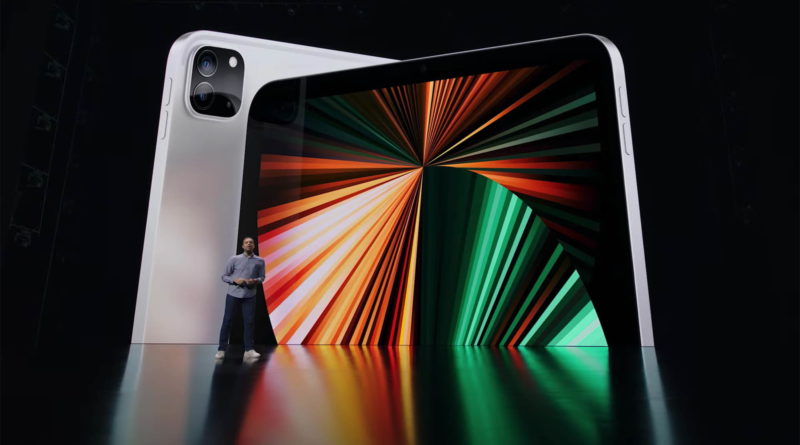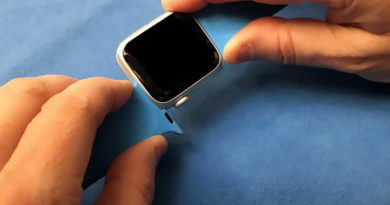The 16-inch iPad Pro Max Shouldn’t See the Light of Day
[ad_1]
Apple is reportedly developing larger iPads in the 14-inch to 16-inch range. While that would make for a more immersive experience when docked with a keyboard, it’s hard to imagine how such a device — let’s call it the “iPad Pro Max” — would make sense as part of the iPad line.
The report comes from Bloomberg, which says Apple’s engineers and designers are currently “exploring” the larger iPad models. The tablet allegedly wouldn’t arrive until 2023 at the earliest — if at all. The report comments that the potential 14-inch to 16-inch iPad would “continue to blur the lines between tablet and laptop.”
Would it, though? We’re essentially talking about a touchscreen laptop with an unwieldy tablet mode as an afterthought. Such a device would have a small audience, and it would hardly warrant using the name “iPad.”

Bigger is not always better
In terms of size, the tablet versus laptop question is a zero-sum game. The farther you push into ideal laptop sizes, the less comfortable the device becomes as a consumer tablet. The opposite also holds: The more you prioritize tablet comfort, the more undersized it is as a laptop.
The 11-inch iPad Pro and 10.9-inch iPad Air both hit an ideal size for tablet use. While they’re on the smaller side when docked with a keyboard, they’re still capable as smaller notebooks. And for those who want a bigger screen for laptop mode, Apple offers the 12.9-inch iPad Pro, which hits the upper limits of what feels comfortable in hand.
As it stands today, the iPad Pro blurs the lines between tablet and laptop about as well as a single device can.
Less than blurring the lines between tablet and laptop, this rumored “iPad Pro Max” would primarily be a touchscreen laptop. Undocking it into a supersized slate might make sense if you’re sketching designs on it with an Apple Pencil. But for the majority of people who aren’t professional designers or digital artists, it would be like picking up a coffee tray to browse the news or read an e-book.
That device would almost start bleeding into the territory of the Surface Studio, Microsoft’s 28-inch desktop PC that can tilt down into a drawing mode for artists. While that’s terrific for the relatively few pros who need a table-sized drawing tablet, it’s a device that only appeals to a highly specialized audience.

Humongous tablets aren’t unprecedented. In 2015, the enormous Samsung Galaxy View blurred the lines between small TV and outsized tablet. “Oversized and underpowered, Samsung’s Galaxy View is a poor TV and a worse tablet,” we pronounced in our review at the time. No matter, Samsung tried again three years later with the Galaxy View 2, which suffered the same critique. They were unique concepts that never caught on, and both generations are discontinued today.
Even Lenovo, a company that never met a wacky, mad-scientist product it wasn’t willing to take a chance on, hasn’t dared make a tablet larger than 13 inches.
That isn’t to say the rumored 14-inch to 16-inch iPad wouldn’t be terrific when docked on Apple’s Magic Keyboard. Its screen would be well suited to sitting on a desktop. Keeping four or more windows onscreen at the same time would go a long way toward boosting the device’s productivity capabilities. It could further make a case for iPadOS as a work platform. And if Apple began allowing MacOS apps on the iPad, it would essentially become a touchscreen MacBook Pro.
One way to make the device practical in tablet mode would be if Apple used folding-display tech. While we’ve seen folding smartphones that expand into a tablet, folding displays could also move in the opposite direction. Imagine a 16-inch screen that could also fold down into a more pedestrian-sized tablet.
Unlikely, yes. But that could make for a more consumer-friendly device than the “iPad Pro Max” that this report describes. Folding could remove the zero-sum aspect from tablet/laptop hybrids.

Apple once specialized in niche products for creative professionals, but that’s much less of its focus today. While Apple won’t ignore that market entirely, the iPhone maker has outgrown its need to invest in it. Considering how many generations it took to fix a faulty MacBook keyboard, it’s hard to see the company suddenly going all-in on such an ultra-niche creative market — especially when the current 12.9-inch iPad Pro can work just fine for that same audience.
For a firm that shies away from bloated and confusing product lines, a grossly oversized tablet that you can barely justify calling an iPad would be a cringeworthy blunder. Many Apple prototypes never see the light of day, and that’s where the safe money lies on this concept.
Editors’ Recommendations
[ad_2]
Source link




